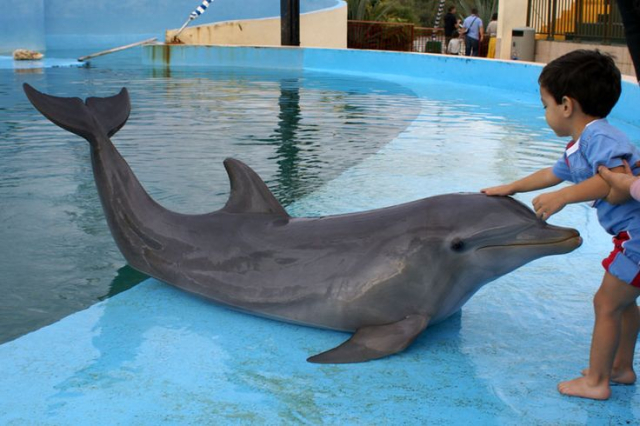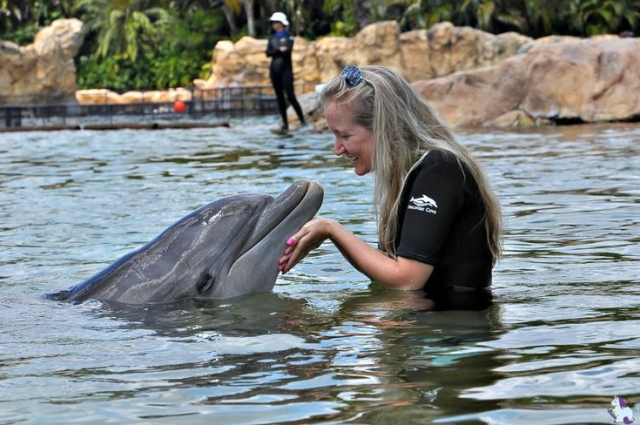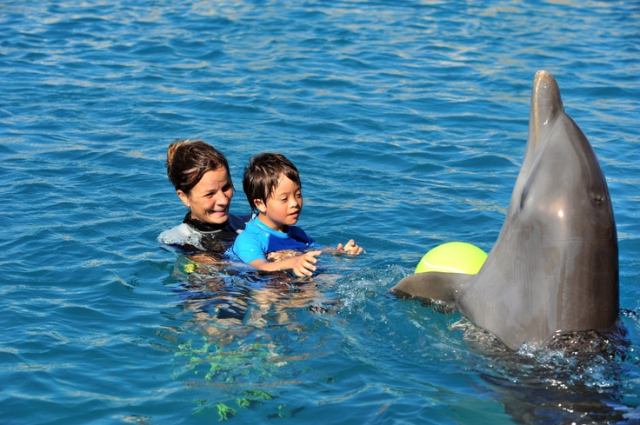Dolphin therapy is based on the idea that dolphins, due to their intelligence, sensitivity and friendly nature , can provide a unique therapeutic environment. Patients interact with these animals in sessions guided by specialized therapists, which can include swimming, playing or simply being in direct contact with the dolphins . These interactions seek to generate a positive response in the patient's mood and motivation, which can help in the treatment of various conditions.
This treatment has been recommended primarily for people with physical disabilities, neurological disorders, and psychological problems . Some of the patient groups who might benefit include:
· People with autism: Studies indicate that interaction with dolphins can improve communication and social skills in children and adults with autism spectrum disorders.
· Patients with cerebral palsy: Therapy can stimulate the nervous system and improve mobility in people with motor disabilities.
· People with depression or anxiety: Contact with dolphins, along with the aquatic environment, can help reduce stress and improve mood, offering mental health benefits.
· Children with Down syndrome: In these cases, dolphin therapy can contribute to better cognitive development, improved self-esteem and increased social skills.
· Patients with emotional trauma: People who have experienced traumatic events can find in this therapy a safe and relaxing space that allows them to process their emotions. 
You may also be interested in: Dolphin therapy in Santa Marta
Although dolphin therapy has been used by therapists in different countries and specialized centers, its approval within traditional medicine is limited . It is considered a complementary therapy and is not universally accepted as a main treatment . However, branches such as psychology and physiotherapy have explored and used this technique in conjunction with other conventional therapies.
In scientific terms, there is no clear consensus on the exact mechanisms by which dolphin therapy produces improvements in patients , although some specialists believe that simply interacting with these animals helps stimulate the production of endorphins , which reduces pain and generates feelings of well-being . However, the conventional medical community, such as the American Medical Association (AMA), has not yet given full official endorsement, citing the need for more research to support the long-term effectiveness of dolphin therapy.
You may also be interested in: Story of overcoming fears at sea
What are dolphin therapy sessions like? 
Dolphin therapy sessions usually last between 30 minutes to an hour , depending on the type of program, the needs of the patient, and the attention span of the dolphins . Generally, the therapy is organized in blocks of several days or weeks, with daily or inter-daily sessions , since repetition and consistency are key to achieving therapeutic benefits . The most common programs last between 5 to 10 days, although in some cases they can extend up to a month, depending on the therapeutic objectives. Each session is carefully designed and supervised by a multidisciplinary team. These sessions generally consist of 5 steps:
1. Introduction and preparation: The patient is familiarized with the environment and the therapeutic equipment. A brief talk is given about interacting with dolphins, emphasizing respect for the animals and basic safety instructions.
2. Dolphin Interaction: The main part of the session involves controlled interaction with one or more dolphins. This may include:
- Swimming with the dolphins: Patients, depending on their mobility and confidence, can swim with assistance or independently, following the instructions of the therapist and dolphin trainer.
- Water games and activities: Games such as throwing balls or hoops for the dolphin to retrieve, or receiving kisses and caresses from the dolphins are often organised. These activities aim to promote sensory and motor stimulation.
3. Specific therapeutic exercises: In some cases, patients participate in exercises designed to improve their physical mobility. The rhythmic movements of the dolphins and the aquatic environment provide a relaxing context for these exercises.
4. Emotional contact: In addition to the physical component, emotional contact with the dolphin is emphasized. Stroking or simply observing the graceful movements of these animals can generate a feeling of calm and joy in patients.
5. Assessment and closure: The session ends with a brief assessment of the patient's progress, where the effects of the interaction are reviewed. A rest period is recommended afterwards to maximize therapeutic benefits and prevent fatigue.
You may also like: Photographs at sea
Who performs dolphin therapy? 
- Certified therapists: Health professionals, such as physical therapists, psychologists, or occupational therapists, plan and supervise therapeutic activities. They tailor therapy to each patient's individual needs and ensure that the correct activities are performed.
- Dolphin trainers: Trainers are responsible for caring for and training dolphins so that they can safely participate in sessions. They ensure that the dolphins are in a state of proper well-being and that interactions are safe for both the animals and the patients.
- Specialist doctors: In some centers, there are doctors or medical staff who supervise the physical condition of patients, especially if they are people with severe disabilities or complex medical conditions.
- Therapeutic Assistants: In addition to the primary therapist, a therapeutic assistant may be present to assist the patient in the water, ensuring that activities are completed comfortably and safely.
We invite you to take a look at other articles at: https://yate.co/en/blog


